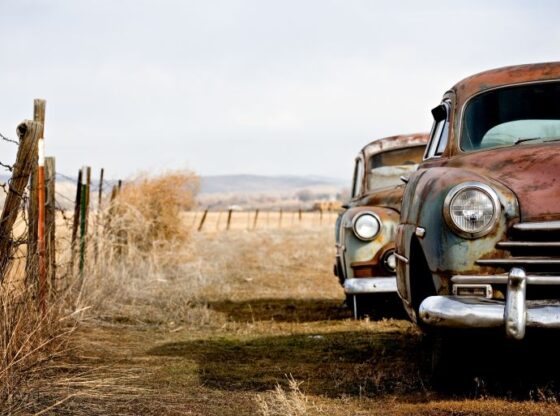Published On 2/11/2025
|
Last update: 15:34 (Mecca time)
Classic car enthusiasts say that time may beautify metal, but it has no mercy on it. Rust and corrosion remain the most dangerous opponents to the structures of these mechanical masterpieces, whose details carry the scent of the past and the charm of ancient industry.
The German car magazine “Auto Zeitung” explained that treating rust in classic cars is not a simple task, but rather a precise restoration journey that requires experience and specialized tools.
This process usually begins by removing the old paint, then cleaning the structure from impurities, and ending with coating it with a protective layer that restores its luster and protects it from its eternal enemy: moisture.
Removing paint… starting from scratch
When the vehicle is severely damaged, a chemical bath is the best option to begin treatment.
In it, the structure is immersed in a mixture of alkali, water and paint removal catalysts at a temperature of about 80 degrees Celsius.
This process chemically breaks down old paint layers without damaging the original metal.
Phosphorus bath…a weapon against rust
After removing the paint, hidden rust spots usually appear, and this is where the phosphoric bath begins, where the metal parts are soaked in a solution of phosphoric acid at a temperature of between 40 and 50 degrees Celsius.
This step gently removes rust residue and prevents new layers of corrosion from forming.
It is sometimes preferable to use acid-neutral solvents, which are a safer alternative for sensitive metals such as aluminum and steel, as they clean the surface without affecting its structure.
Cathodic electroplating
After the metal becomes bare and pure, the body undergoes cathodic electroplating, a modern technology in which the car is immersed in a special bath through which fine electrical currents pass.
These currents attract electrically charged paint particles to the metal surface, forming a durable protective layer that covers the car from the inside and outside.
Another alternative is to use a rust-resistant primer, or rely on sand or soda grinding processes to achieve a clean, residue-free metal surface.

Grinding with sand, soda and ice
Water is sometimes mixed with abrasives to reduce dust and improve the result.
Soda grinding is a gentle option on the metal, but does not completely remove rust, so it is usually supplemented with plastic or glass granules to smooth the surface.
Experts warn against using traditional sand because it may leave a rough effect that distorts the surface.
The latest method is dry ice cleaning, which is a technique used for sensitive areas such as engine rooms or underbody parts.
In it, granules of solid carbon dioxide at a temperature of approximately -79 C are directed towards the surface, transforming upon contact into a gas, gently removing dirt and paint without harming the metal or electrical components.
Delicate touches and small tools
Small parts that cannot be placed in a chemical bath, such as generators or control units, are treated with brush-on paint-removing chemical pastes.
After minutes, the paint begins to peel and the residue can be removed with a rotating wire brush.
As for minor rust, it can be dealt with using a steel brush or sanding machine, while deeper cases require a special rust remover to stop the chemical reaction and prevent its spread.

